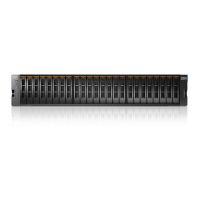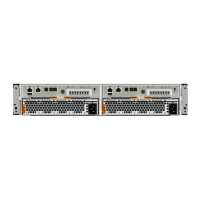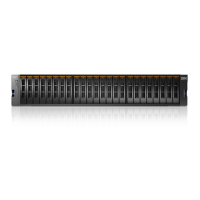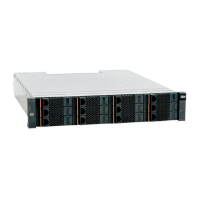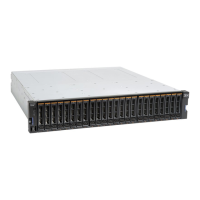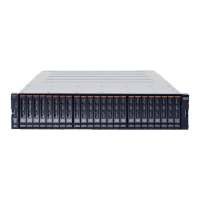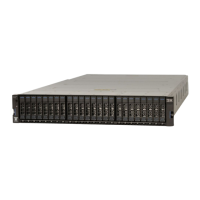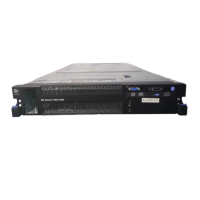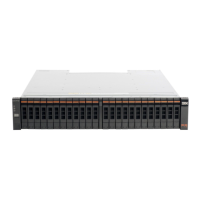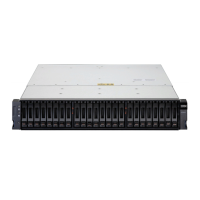Chapter 3. Graphical user interface overview 109
HyperSwap HyperSwap volumes create copies on separate sites for systems that
are configured with HyperSwap topology. Data that is written to a
HyperSwap volume is automatically sent to both copies so that either
site can provide access to the volume if the other site becomes
unavailable. HyperSwap volumes are supported on Storwize systems
(for example, Storwize V5030 or Storwize V5030F systems) that
contain more than one I/O group.
Custom Custom volumes create volumes that are based on user-defined
customiztion rather than taking the standard default settings for each
of the options under quick volume creation.
Thin-provisioned When you create a volume, you can designate it as thin-provisioned. A
thin-provisioned volume has a virtual capacity and a real capacity.
Virtual capacity is the volume storage capacity that is available to a
host.
Real capacity is the storage capacity that is allocated to a
volume copy from a storage pool.
In a fully allocated volume, the virtual capacity and real capacity are
the same. In a thin-provisioned volume, the virtual capacity can be
much larger than the real capacity.
Compressed This volume is a special type of volume where data is compressed and
thin-provisioned at the same time. Any compressed volume is a
thin-provisioned volume by default, and no option is available to
change this characteristic. Data within the compressed volume is
compressed as it is written to disk. This design saves additional space
on the storage drive so that you can store more data within the same
storage system.
Change volumes Change volumes are used in Global Mirror relationships where cycling
mode is set to Multiple. Change volumes can also be used between
HyperSwap volume copies, and other relationship types, to
automatically maintain a consistent image of a secondary volume
when a relationship is being re synchronized.
Change volumes create periodic point-in-time-copies of the source
volumes and replicate them to the secondary site. Using change
volumes lowers bandwidth requirements by only addressing the
average throughput and not the peak.
To keep a volume accessible even when an MDisk on which it depends is unavailable, a
mirrored copy can be added to a selected volume. Any volume (generic, thin-provisioned or
compressed) can be mirrored with a mirror from any type, even the same one. Therefore, a
volume can be either thin-provisioned with compressed copy or compressed with
compressed copy. Each volume can have a maximum of two copies.
Each volume copy is created from a set of extents in a storage pool. By using volume
mirroring, a volume can have two physical copies. Each volume copy can belong to a different
storage pool, and each copy has the same virtual capacity as the volume. In the management
GUI, an asterisk (*) indicates the primary copy of the mirrored volume. The primary copy
indicates the preferred volume for read requests.
Important: Compression is only available in the IBM Storwize V5030. It requires 64 GB of
RAM. To use the compression function, you must obtain the IBM Real-time Compression
license.

